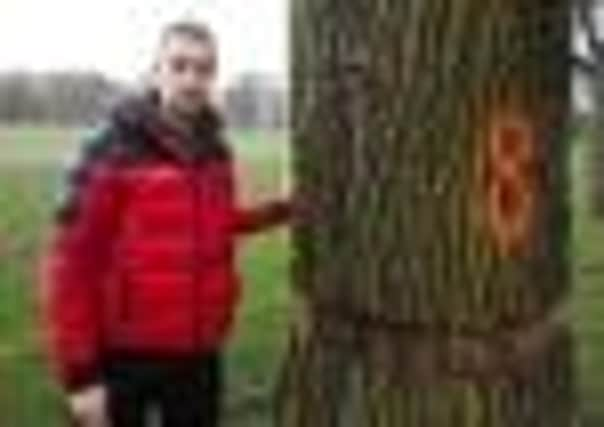Experts fight to save elms as disease makes comeback


Now experts are fighting against a foreign invasion, battling a disease which is threatening to wipe out the Capital’s elm trees.
Dutch Elm Disease is decimating the city’s elm stock, having terminally infected more than 1000 in just a year.
Advertisement
Hide AdAdvertisement
Hide AdThe highly- infectious fungi has been found in beauty spots including the Meadows, Princes Street Gardens and Portobello Park.
It was first detected in the city more than 30 years ago but a resurgence in cases has left experts worried for the future of “Edinburgh’s tree.”
Ian Morrison, assistant trees and woodlands officer at Edinburgh City Council, said his team were working hard to stop the rot by identifying and removing infected trees.
He said: “It’s sad, especially because Edinburgh was the city of the elm tree. But if it keeps progressing at the rate it has we could lose the majority of trees in the next ten years.
“It’s prevalent throughout the city and once a tree has it, there’s nothing that can be done. It’s terminal and the tree will die. The Victorians planted it as the main tree of the city but our latest survey shows there’s only between 10,000 and 15,000 left. They are still predominant in our parks when you compare them to other trees and we still have some magnificent examples.”
He added: “We are trying to preserve this unique population we have and that’s why this programme of containment is so important.”
Once infected, the tree tries to halt the spread by shutting down, but effectively kills itself by cutting off its own flow of water and nutrients.
A survey by the city’s forestry service found outbreaks were particularly bad in the east and south wards of the city.
Advertisement
Hide AdAdvertisement
Hide AdHotspots include the Meadows, Bruntsfield Links, Portobello Park, Davidson Mains and Figgate Park, but examples can be found almost anywhere within the city limits.
One tree – estimated at 120 years old – which stood next to the Scott Monument in Princes Street Gardens, was felled but there are many more on private land that cannot be tackled.
Mild winters have been blamed for the cases almost doubling in the last three years, allowing the beetles to thrive, and tricking the trees into producing leaves early.
The teams have until the end of March to remove and dispose of the deadwood before the beetles are active again.
Timber is reused where possible, with the Scottish Furniture Maker Association using six trees from the Meadows.
The conservation teams are replanting a more resilient species, called the Princeton elm.
But the future is far from rosy for the tree which was threatened by a similar outbreak 20 years ago.
Ian added: “We do the best with the resources we have got but it is quite challenging. We have a lot of ground to cover and often they are in difficult places for us to reach.
Advertisement
Hide AdAdvertisement
Hide Ad“Often there are cases on private land so we have to track down the landowner and write to them to ask them to remove it. It’s not an enforcement matter any more so we are relying on everyone to do their bit for its future survival.”
History of a tree killer
DUTCH elm disease is caused by two related species of fungi, which is carried by elm bark beetles.
The first fungus was found in northern Europe in 1910, before the second more aggressive type was came to Britain on infested elm logs in the 1960s.
The cycle of disease begins when females tunnel into trees to lay eggs. Larvae make their way further into the tree to feed, before they come into the open as adults in spring. If a beetle is in a tree infected by the disease, sticky spores of the deadly fungus can attach to their backs.
When the beetle moves on, as they regularly do in search of food, they carry the spores with them and spread the disease.
There are two types of elm bark beetles – one larger than the other with the larger one more likely to spread the infection.
The beetles are, however, authors of their own demise as they kill their own habitat, leading to a reduction in their numbers.